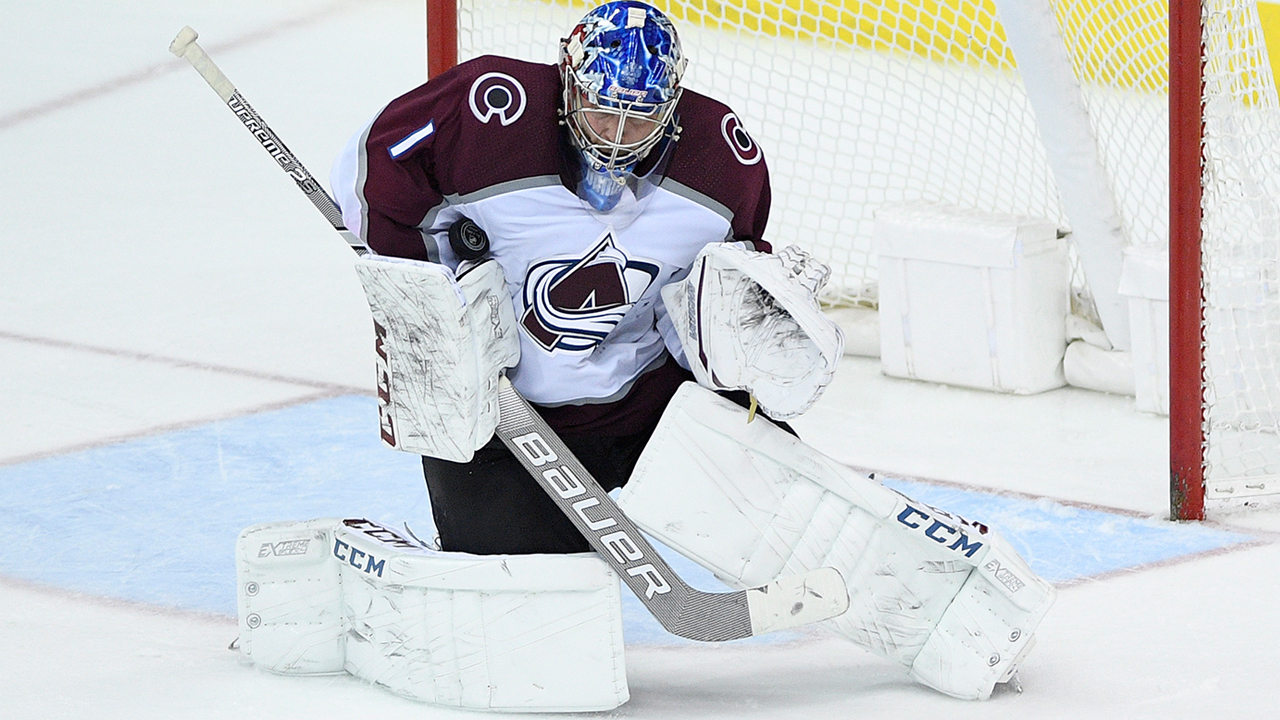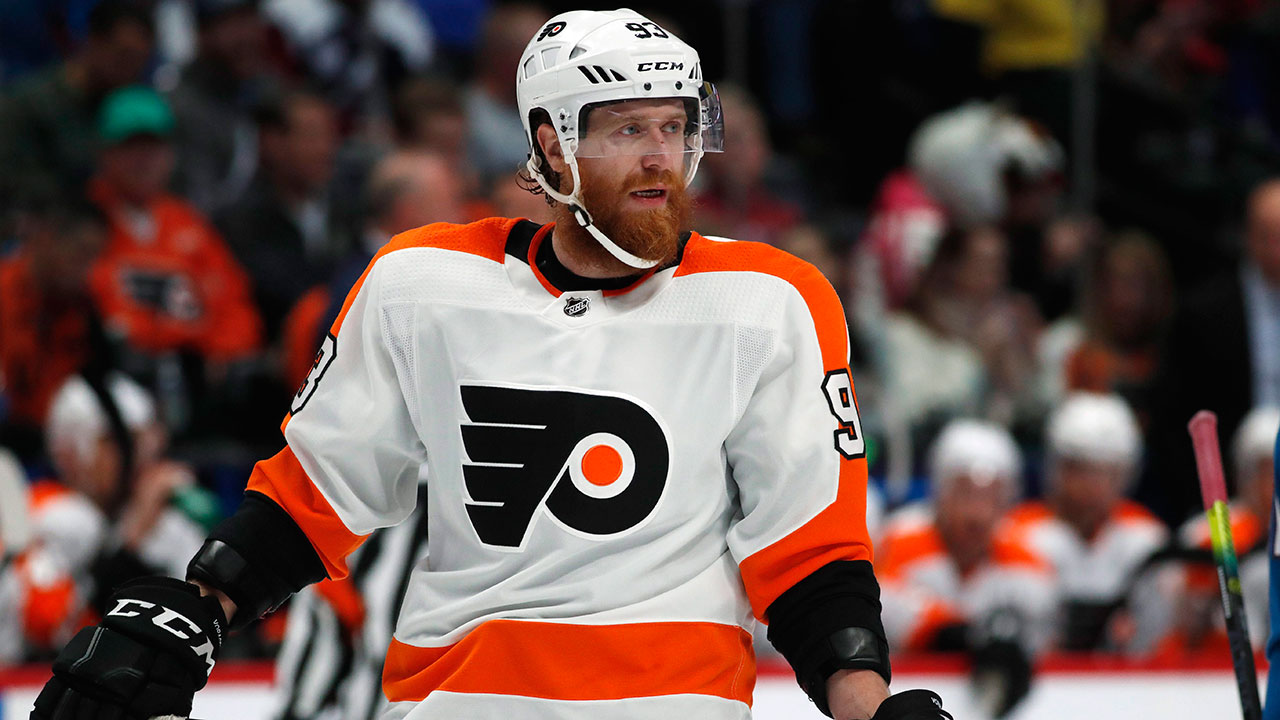The Colorado Avalanche are a curious case. It seems they’re either up or down, but rarely in the middle.
Remember 2016-17? The Avs were historically awful. No team in the salary cap era has lost more games in regulation than Colorado’s 56 that season — the next-closest to that mark are the 2013-14 and 2014-15 Buffalo Sabres, which had 51 regulation losses each.
Colorado’s outlook became much sunnier last season though, when Nathan MacKinnon broke out as a Hart Trophy contender leading one of the best lines in the NHL and the team got back into the playoffs for the first time since 2014. They put up a fight against the favoured Nashville Predators and despite losing in six games, the Avs, it seemed, had fully recovered.
Even this season started well. From puck drop in October until Dec. 1, Colorado had a 15-6-5 record that was tied for fourth-best in the NHL and atop the Western Conference. Everything was clicking and the young team was still trending up. The Avs won their first game in December and then it all went wrong — they won just three more times in the remaining 13 games that month. Colorado won just three more in January and still haven’t been victorious in February.
The Anaheim Ducks have been getting a lot of attention recently for how their season has imploded and how that led to the firing of coach Randy Carlyle over the weekend. But it’s worth pointing out that since Dec. 1, no NHL team has fewer wins than Colorado’s seven.
So just what’s gone wrong here that has so violently thrown this promising team’s season off the rails? There are a few factors to consider.
[snippet ID=3322139]
THE GOALTENDING HAS VANISHED
Semyon Varlamov was great in October. In eight games that month, the Russian posted a .950 save percentage that was tops in the league among all starters. And while no one was expecting him to retain that unsustainable save rate through the whole season, the fall-off since has been dramatic.
Varlamov’s save percentage in the following months went like this: .905 in November, .874 in December, .888 in January and .896 early on in February. In four appearances this month, Varlamov has allowed four goals or more three times.
Making the situation worse is that Colorado’s contingency plan — and indeed their plan for the future — hasn’t provided any sort of safety net. Remember the Avs traded a second-round pick to Washington last summer for Brooks Orpik (who they then bought out) and goalie Philipp Grubauer. The team signed the German netminder to a three-year contract and bet on him being able to convert three straight solid seasons as a backup into a starter’s role either this season or next. With Varlamov a pending UFA, Grubauer was set up to be the goalie of the very near future.
Grubauer has made 21 starts this season, been pulled in three of them, and allowed three goals or more 14 times. His .890 save percentage today would be the worst mark of his professional career — you’d have to go all the way back to his rookie season with the OHL’s Belleville Bulls in 2008-09 to find a worse save rate in his history. Grubauer had an .888 save percentage in 17 games that season.
The way the goaltending situation has unfolded this season has opened up some pretty interesting questions about what GM Joe Sakic will do at the deadline and in the summer. Grubauer has two more seasons on his deal with a $3.3-million cap hit, but would they consider dealing Varlamov rather than risk losing him for nothing? Or does this make it more likely they’ll try to re-sign the 30-year-old?
[sidebar]
THE COMPLETE ABSENCE OF A SECOND SCORING LINE
We knew the Rocky Mountain Line of Mikko Rantanen, MacKinnon and Gabriel Landeskog would be fine, but the Avs needed some things to go right on their second line for the team to hit its full potential.
That hasn’t happened — Carl Soderberg, who centred a strong shutdown line for the Avs last season, is the only non-first-liner supplying anything close to consistent goal-scoring with a career-high 18 already.
“Everything we worried about was that this team wouldn’t have enough depth,” BSN Denver reporter Adrian Dater told Jeff Blair on the FAN 590. “We thought it could have some depth if the second line could be solidified with Tyson Jost being the young, first-round pick centreman. If he can do it, we all thought this team may be very good, but that line never did solidify.”
Jost, 20, was the 10th-overall pick in the 2016 draft and coming off a 12-goal, 22-point rookie season. But his offensive totals didn’t grow enough (his goal rate actually dropped) and he was demoted to the AHL in mid-January. There, with the Colorado Eagles, Jost scored four goals and five points in eight games. He’s since been recalled and is expected back in the lineup Tuesday against Toronto.
In Jost’s absence, Soderberg got a crack at the second-line centre spot and the Avs even (briefly) separated their top line. J.T. Compher got a look in that role, too, but has zero goals and three points since Jost was sent down.
Having one of the league’s top lines has been a blessing, but even that trio has cooled relative to their early-season dominance. That’s made the lack of support glaring since everything started going wrong in early December. Again, through the first two months of 2018-19 Colorado’s offence as a whole was the best in the league, but in the past two-and-a-half months they average a full goal less per game.
From Dec. 1 to today, the Avalanche’s 2.85 goals-per-game average ranks in the bottom half of the NHL.
A DETERIORATING SPECIAL TEAMS
Another tale of two halves, Colorado’s penalty kill, which last season finished fourth-best in the league, has been a real problem area since Dec. 1. They had the 11th-best PK over those first couple of months, but it has been the worst in the league ever since with a 73.2 per cent kill rate.
The primary source of this struggle, surprisingly, has been its play in front of the home crowd. Colorado’s road PK rate of 80.7 actually ranks in the top half of the league, but at Pepsi Centre they kill off just 71.3 per cent of their penalties, which is the worst mark in the NHL.
The power play, too, has experienced a dramatic drop-off. Once the top unit in the league through November with a 31.4 per cent success rate, Colorado’s man advantage has struggled and converted on just 17.4 per cent of its opportunities since Dec. 1.
[relatedlinks]










